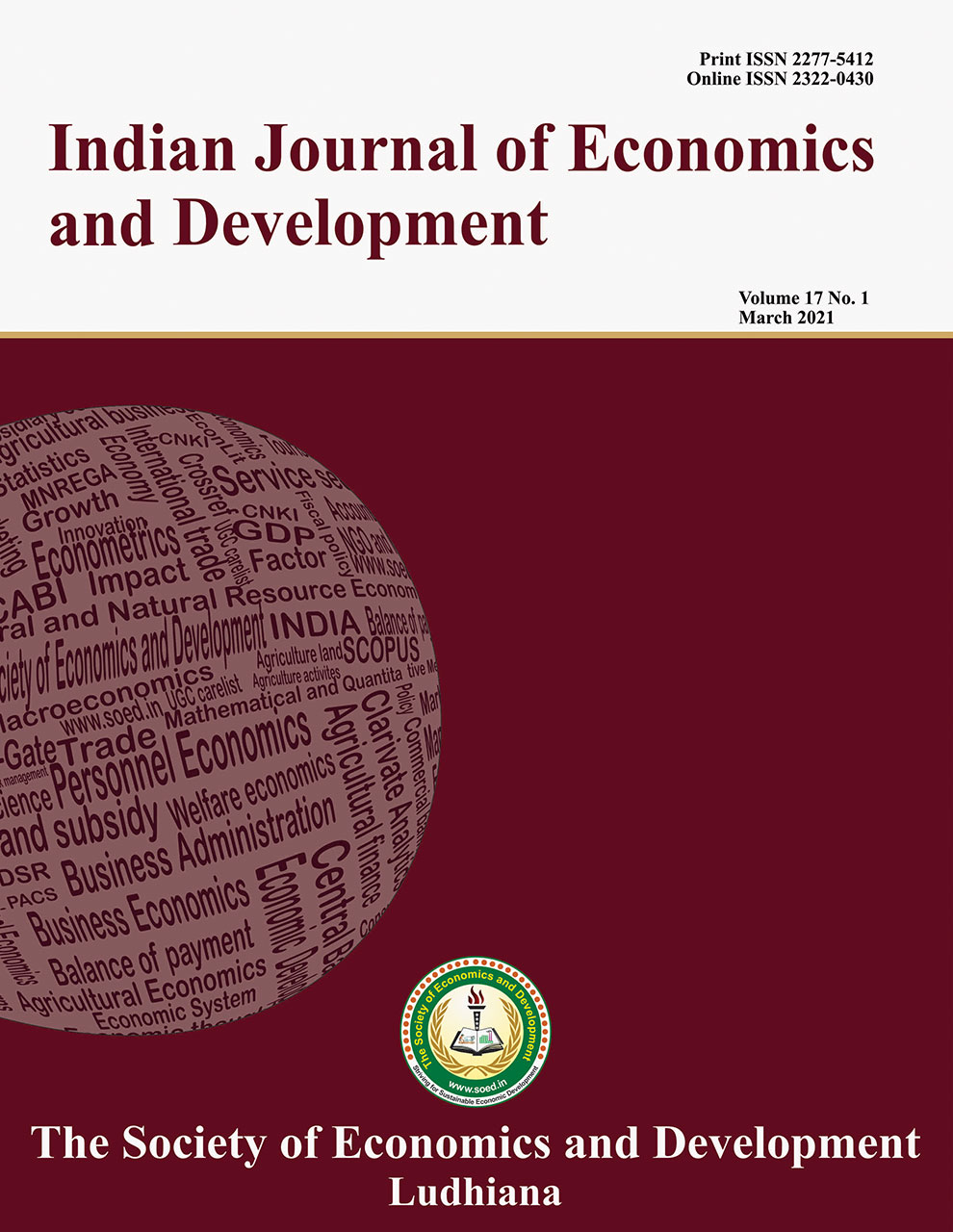Cost and Return Analysis of Sweet Corn in Chhindwara District of Madhya Pradesh

Price: ₹ 1000
Author: Neha Dwivedi1, Aradhana Singh Rajpoot, R.M. Sahu, and A. Shrivastava
Author Address: Department of Agricultural Economics and Farm Management, College of Agriculture Jawaharlal Nehru Krishi VishwaVidyalaya, Jabalpur-482004 (M.P.)
Keywords: Cost and returns, economically viable, sweet corn.
JEL Codes: C83, D24, L11, Q12, Y10, Y20, Y30.
Abstract
The present study was carried out with objective to estimate cost and returns of sweet corn under different size of sample farms in study area. The study is confined to Chhindwara district of M.P. as it is one of the major sweet corn producing districts of the state with its favourable agro-climatic factor for Sweet corn crop. A sample of 45 sweet corn farmers comprises 15 each small, medium, large farmers were selected by proportionate random sampling method from three villages, viz. Rohankala, Rohandhana, and Gauraiya. The required data were collected from selected respondents by survey method using pretested interview schedule, for estimation of cost of cultivation cost concept (Cost A1, A2, B1, B2, C1, C2 and C3) were used and profitability estimation, net farm income, family labour income, farm business income and B:C ratio were calculated. The primary data pertained to the agriculture year 2017-18. The cost of cultivation of sweet corn (Total cost C3) was `68734 per hectare, variable cost percentage was 59.98 percent and fixed cost was 40.01 percent. The major items of cost of cultivation were rental value of land (35.30 percent), seeds (21.73 percent), family human labour (11.92 percent) and hired human labour (11.48 percent). The per hectare average gross income was `145590 with B: C ratio 1:1.92 which showed profitability of crop. On the basis of finding of study, it is recommended that the study area is very potential for sweet corn crop and it is economically viable.
Description
Indian Journal of Economics and Development
Volume 16 No. SS, 2020, 516-519
DOI: https://doi.org/10.35716/ijed/NS20-048
Indexed in Clarivate Analytics (ESCI) of WoS
Neha Dwivedi1, Aradhana Singh Rajpoot, R.M. Sahu, and A. Shrivastava
Department of Agricultural Economics and Farm Management, College of Agriculture
Jawaharlal Nehru Krishi VishwaVidyalaya, Jabalpur-482004 (M.P.)
Corresponding author’s email: Nehaphdsc@gamil.com



